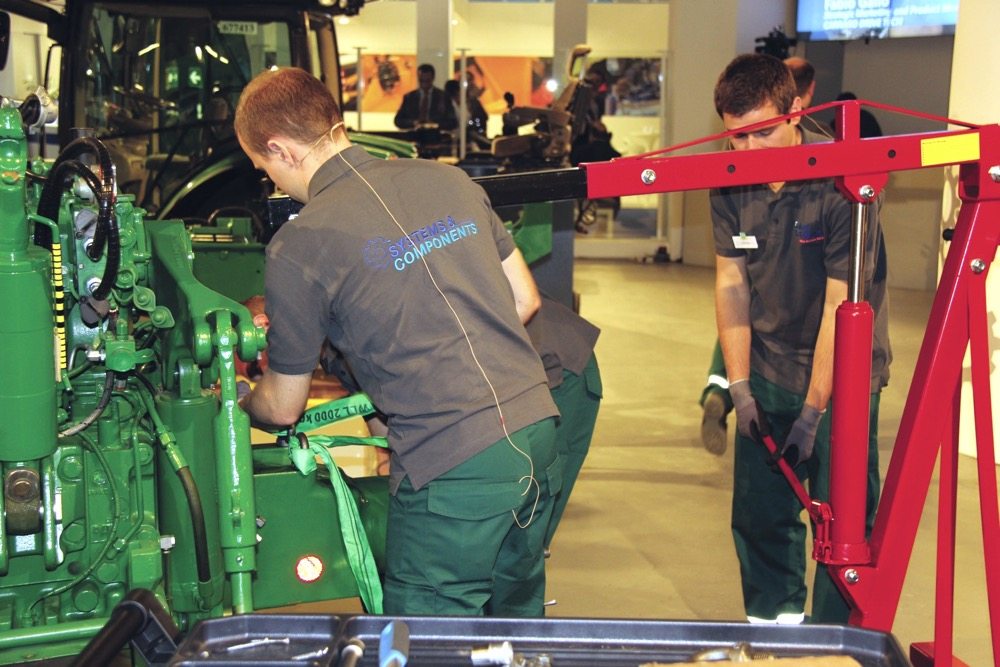It has to rank right up there as one of the most hotly debated topics in the farm machinery industry, and it has become known by the catch phrase “Right to Repair.” John Deere was (and arguably still is) the primary focus of fury, with many both inside and outside the ag sector railing against the brand for its public stand on the issue.
While other brands seemed to stay a bit under the radar despite their apparent support of Deere’s position on the matter, the green brand faced the wrath of those who have a strong consumer protection point of view and want to express it.
Read Also

What to consider when setting up farm-related business ventures
Things to consider before launching a farm-adjacent side business.
If you’ve been living in a cave or for some reason haven’t heard about it, the debate centred around the brand’s unwillingness to allow anyone outside of an authorized dealership service department technician — including owners — access to the programming inside the engine control modules on its equipment, even to diagnose problems. So if an error code popped up, the only thing that would make it go away was a phone call to the dealership, which would start the pay-by-the-hour clock ticking as a mechanic was dispatched.
For many, it was a non-issue. For instance there are owners who aren’t about to go anywhere near their new equipment with a wrench, relying instead on late-model fleets and the local dealership service department to handle repairs. Others are farmers who run primarily older machines and are already doing a good chunk of their own repairs — with no need of computer software analysis tools. But for a lot of people it became a flashpoint.
Their argument can be summed up: we bought and paid for the machine, so we should be able to do anything we want with it. And that includes diving into the ECM to “chip” the engine or change any of the operating parameters they see fit to fiddle with.
Deere fought back in a public response using the analogy of a book. Any person can buy a book, they said. Dog-ear the pages or write in the margins if you like, but no one can rewrite what the author wrote to create it.
Not everyone bought into that logic.
The criticism of Deere’s policy made headlines in publications far outside agriculture. Even Wired magazine, which caters to techies, weighed in. “We can’t let John Deere destroy the very idea of ownership,” their headline screamed.
The writer who created that piece for the magazine acknowledged that Deere was just one of many manufacturers who have applied for copyright protection for their software in the U.S., also singling out General Motors as a major automaker that has done the same.
And, of course, the desire to protect software extends well beyond machinery and vehicles. It’s something the entire tech sector has grappled with. American copyright regulations do allow for exemptions, giving owners authority to copy code in some circumstances, such as creating backup files to protect the data within their devices. But Deere has argued against those provisions, citing such reasons as safety and warranty requirements.
A pivot to the courts or state lawmakers in the U.S. seemed the unavoidable result of all this, and so far a total of 18 states have introduced their own versions of right-to-repair legislation in their recent administrative sessions. Bills such as Nebraska’s Fair Repair Act are aimed specifically at ag equipment.
Fast-forward to early February of this year, and faced with the threat of wide ranging regulatory rules beyond their control, it looks like the manufacturers and dealers have cried uncle.
This winter, the Association of Equipment Manufacturers and the Equipment Dealers Association made a joint announcement on behalf of their member companies. It said all major ag equipment brands would now commit to a more open approach. The pending legislative assaults against them seem to have had an impact on their thinking. In fact, the AEM/EDA announcement calls this a better alternative than potential “broader” legislation.
So clearly their eyes were on the prospect of courts or governments crushing their monopoly hold on the magic that happens inside those little boxes hidden away on machines. In fact AEM, which is acting on behalf of all its member companies, including all the major ag equipment brands, has been present in New Hampshire arguing against that state’s pending Right to Repair act.
“The fact is that the commitment we are making is a common sense solution that responds to the needs of our customers and end-users, without government intervention,” said AEM director of state government and industry relations Stephanie See in testimony before the New Hampshire House Commerce and Consumer Affairs Committee.
“Right to repair proposals are not about empowering farmers and ranchers,” See continued. “Our commitment strikes the right balance in the way ‘Right to Repair’ legislation would not.”
That seems to support the idea that the new approach is seen by brands as a best hope to keep some measure of control over its software as it faces the legal onslaught that was very likely bound to bust open the floodgates.
Both in the legislatures of U.S. states and in the public sphere, manufacturers through their associations are touting this new approach as a way to accommodate the desire owners have to do their own repairs, without allowing for any ECM programming modifications. It wouldn’t allow rewriting of any code that would fundamentally affect a machine’s overall operation in order to “preserve the integrity of the equipment.”
“Equipment manufacturers are proud to act decisively to provide our customers with common sense solutions they have asked for to easily make simple repairs to their tractors or combines, or assess when to involve a dealer,” said AEM president Dennis Slater in the public announcement.
“This strikes the right balance in the way ‘Right to Repair’ legislation would not,” he added, echoing the trade’s now common phrasing.
“Manufacturers and dealers invest considerable resources in making sure their customers have what they need to be successful,” added EDA president Kim Rominger in the same announcement. “This commitment by our industry is a market solution to a market need. Dealers and manufacturers will ensure that end-users have the tools they need to perform maintenance and basic repairs on their equipment and to allow them to quickly identify more serious issues, which require the assistance of a dealer. Simply put, our industry commitment is to ensure that folks have the ‘right to repair’ while continuing to work against attempts to improperly modify equipment so as to compromise safety and emissions features.”
So what have the brands and dealers now actually committed to?
They say they will make parts and service manuals available, and that they will provide “product guides,” service demonstrations, training and seminars, onboard diagnostic tools, and electronic service tools along with other necessary publications. All these will be available by the year 2021.
Why wait until 2021? That wasn’t made entirely clear. But I suspect it means brands will be rewriting, or at least reorganizing the software, creating accessible and inaccessible divisions within ECMs, which would accommodate repairs but not modifications.
To take a detailed look at what’s being committed to, go to the new website r2rsolutions.org.
Will this new tack by manufacturers and dealers succeed in stopping the mounting momentum of right-to-repair legislation? Is it a better alternative than broad-ranging laws, as manufacturers claim it is? Who knows?
















